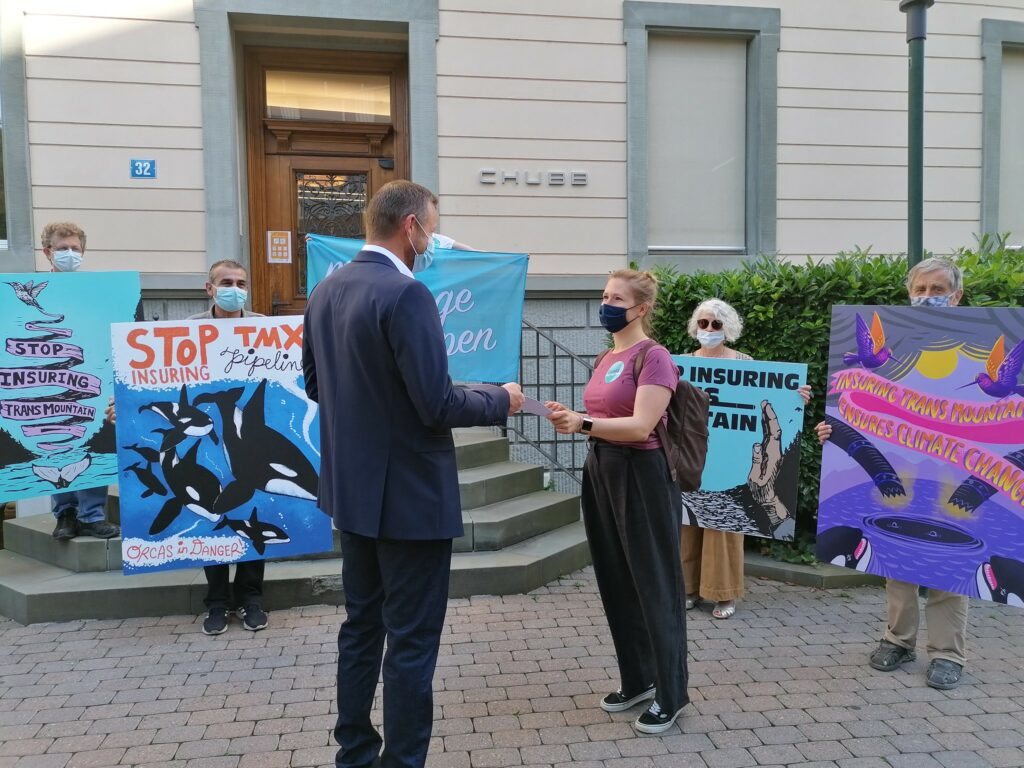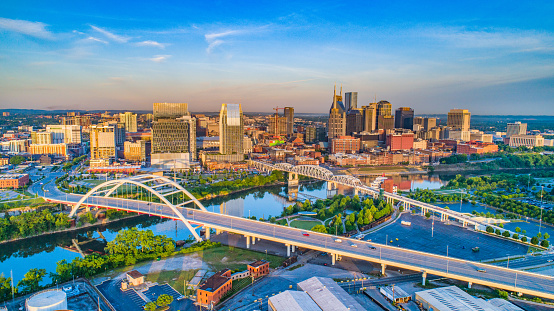They came so close. Philip Sardelis already had his vaccine appointment in hand. Cinnamon Jamila Key had just received her first shot. Charles Pryor tried but couldn’t get the coronavirus vaccine in time. Alexey Aguilar had been reluctant to commit to such a new medicine but was coming around to the idea.
And then covid-19 took them. On top of the grief and sorrow, their families now also must deal with the unfairness, the eternal mystery of what might have been.
The Americans who have died of covid-19 in recent days and weeks – the people whose deaths have pushed the total U.S. loss from the pandemic to nearly 600,000 – passed away even as their families, friends and neighbors emerged from 15 months of isolation and fear. The juxtaposition is cruel: Here, masks off; workplaces, shops and schools reopening. There, people struggling to breathe, separated from loved ones, silenced by ventilators.
“The finish line is in sight and if you don’t make it now, it’s like the astronauts who make it all the way home and then their capsule splashes down and sinks,” said Peter Paganussi, an emergency room physician in Ranson, W.Va., who still sees new cases of covid, the illness caused by the coronavirus, every day.
Even as the number of Americans dying of covid has plummeted from thousands to hundreds each day, the death toll keeps climbing.
It has taken about as long to move from 500,000 U.S. deaths to 600,000 as it did to go from zero to the first dark marker of 100,000 – about four months. That’s a huge improvement over the harrowing one month it took for the death count to soar from 300,000 to 400,000 last winter.
Covid deaths are becoming relatively rare in some places, basically tracking the pace of vaccinations, which varies enormously state to state – 70% of Vermonters have received at least one dose, compared with only 34% of Mississippians.
But rosier statistics are small solace to families who now find themselves living in communities of reborn freedom and optimism, even as they stumble through a crushing grief, burdened by an overwhelming sense of almost having made it through.
Deaths that came so late, so close to the possibility of protection by a vaccine, “eat at people,” said Therese Rando, clinical director of the Institute for the Study and Treatment of Loss in Rhode Island. “It’s such a violation. They were so close, they weren’t doing anything wrong and for death to take them, it adds to our outrage. It’s very distressing because people were assumed to be right on the cusp of being safe.”
– – –
In the centuries-old tradition of the Ho-Chunk Nation, a relative dresses a deceased tribal member in a skirt, moccasins and a handmade top sewn from patterned fabric. But on the crisp, cool May afternoon in Trempealeau, Wis., when Michelle De Cora was buried, her sister was not permitted to follow the tradition. The funeral home’s coronavirus restrictions required that only its employees touch the body, so the staff took care of dressing her.
A hundred mourners came to pay their respects, but that evening, although her daughter Amanda had invited any and all to “bring a tent and stay the night,” no one did.
“She’d always said she wanted us to have a party when she died, but nobody was really feeling like that, because of covid,” Amanda said.
As May began, Amanda could feel the first wisps of normalcy. “I was finally getting a glimmer of hope,” she said.
Amanda was already fully vaccinated, as was her husband. Their 17-year-old had just received a second shot. Michelle, however, had not gotten around to it.
At 61, Michelle was an obvious candidate to get vaccinated. She had kidney problems. She was diabetic. Her family was nudging her to do it. The Ho-Chunk Nation, the Indian tribe that employed Michelle for many years, has suffered 17 covid deaths among its 8,000 members and made a big push to get shots in arms.
There were reasons Michelle didn’t get around to getting the shot. She’d stayed fairly isolated through the first months of the pandemic. She lived an hour away from the tribal clinic. She’d tested positive for the coronavirus back in December, and though she never had symptoms and her children suspected it’d been a false positive, she believed she had at least some protection from the virus.
“So she never went,” Amanda said.
Michelle entered the hospital in early May to deal with her long-standing kidney condition – she’d spent many months in the queue for a transplant. But then the coronavirus test that was routinely administered to new patients came back positive.
Amanda was immediately told she had to leave, and her mother was transferred to the covid ward.
“Within a couple of days, they went from saying, ‘She’ll be OK, she’ll be home in a few days’ to ‘We can’t do anything else for her,’ ” Amanda said. “We talked on the phone after that, but she was really out of breath, and then they put the [oxygen] mask on her and she couldn’t talk much.”
Early on in the pandemic, Michelle had mainly stayed home.
“My son would drop off groceries for her,” said Amanda, who spoke to her mother mostly by phone through those months.
Even at home, Michelle kept busy, right up to her last days, working on Ho-Chunk politics, seriously considering a run for the tribal legislature.
Last summer, she volunteered to be laid off so that another worker, who she believed needed the paycheck more keenly, could stay on the job – a selfless gesture her daughter didn’t learn about until after her mother died. (Amanda also found among her mother’s documents several denials of unemployment benefits – apparently things had gotten tight, but Michelle never told her kids about it.)
As the year of home isolation wore on, Michelle let her guard down. This spring, she started going out a bit more, even traveling with her brother and sister to Denver. Still, no one has figured out exactly how she caught the virus.
Amanda still wears a mask to most places, and it angers her to see so many people going barefaced, “fighting what the doctors said to do,” she said. “Everywhere I go now, I’m the only one in a mask. They don’t realize how fast it can take you.”
– – –
Cinnamon Jamila Key signed up for a vaccine as soon as Florida opened up eligibility to people 40 and over. She was 41, a mental health clinician and life coach who planned to go back to school and earn a doctorate in grief counseling with a Christian focus.
In early April, she got her first shot of the Moderna vaccine. But on April 8, she was diagnosed with covid. Whether she became infected before she got the dose or immediately after is not clear. Her mother remembers her complaining of a scratchy throat around when she got the shot.
Cinnamon had a long history of battling back from the edge. She had turned a crippling bout with depression – including two suicide attempts – into a career in mental wellness, focusing on Black and other underserved communities in her area of Miami-Dade County.
She was, her friends and family said, as warm and spicy as her name. She loved pencil skirts and six-inch heels and singing in the church choir at Second Baptist Church near her town of Homestead, south of Miami – leading the congregation in her trademark rendition of the stirring gospel song, “I’ve Got a Reason.”
Even after she fell ill, she took time early one morning – her voice weakened – to speak to her mother’s prayer chain about dealing with grief, said her mother, Betty Key.
“She wrote a book called ‘Crying is Allowed,’ so I think the first thing she would say is, ‘It’s OK . . . to feel what you feel when you feel it,’ ” Betty said.
Cinnamon’s resilience was evident from a young age. She had a business portfolio when she was 11, filling her grandfather’s old briefcase with her detailed drawings for a beauty emporium. After she flunked out of the University of South Florida, Cinnamon struggled through low-paying jobs and attempts to resume higher education.
In 2007, she was nearly done in by a mental health struggle.
“Imagine being diagnosed with clinical depression while you’re getting your degree in social work! Whew! And two failed suicide attempts. Yikes!” Cinnamon told a blogger last year. “It has been quite the journey. Not smooth, but I’m grateful for every inch of this road.”
Eventually, Cinnamon sought help and went on to earn bachelor’s and master’s degrees, spending 11 years as a social worker for Miami-Dade County Public Schools.
She had so many projects outside of her day job – a self-esteem course for young women, a podcast called “Naturally Cinnamon,” and a “Forever” brunch to help mothers and their adult daughters stave off rocky times – that last December, she finally took her side business full time.
Then, covid. As her illness worsened, Cinnamon’s parents – Wallace Key, a retired insurance claims manager, and Betty, a retired Miami-Dade schools administrator, both long vaccinated – drove from their home in South Carolina to be with their daughter.
On April 13, Cinnamon was hospitalized with breathing issues.
“She just didn’t get better and didn’t get better,” her mother recalled.
Doctors wanted to put her on a ventilator, but Cinnamon resisted, said her mother, who could see her daughter only through a window because of anti-infection rules.
On April 15, “my time for visitation was up and I had to leave,” Betty recalled. Usually, the two would blow kisses. That evening, Cinnamon could only wave bye-bye.
Not long after, Betty got a call from the doctor. She thought it would be about the intubation.
“She was gone,” the mother said. Cinnamon died of complications from covid 15 days after receiving her first vaccine dose.
Natalie Rowe, a longtime friend from church and an administrator at the clinic where Cinnamon got her first shot, initially put off getting the vaccine. Its development, she said, “was really quick for me.” Now, she said she hopes Cinnamon’s death will inspire other people of color to overcome their fears.
Cinnamon “tried so hard to do the right thing,” her mother said. “She wasn’t going out, and she wore her mask, and she had her gloves, and she got the vaccine as soon as she could.”
Betty said it’s hard for her to hear even good news about vaccines, though she still believes everyone should get the shot. “If a story comes on the news about the vaccine, I walk away,” she said. “I don’t want to hear the success stories. I don’t. Because my daughter is not one of them.”
– – –
Claudia Nodal was going into ninth grade at Miami Carol City Senior High in Miami Gardens, Fla., when Alexey Aguilar asked her to marry him.
“I said yes, of course,” Claudia recalled.
They wed two months after she graduated, in 1999. Since then, they had raised three daughters, built careers – he as a corrections officer, she as a third-grade teacher – and now they were planning a retirement close to the beach.
Claudia loves the ocean. Alexey wasn’t crazy about the beach, but, for her, he would move there.
They and their girls – Monica, 20, who is in college; Angelica, 17, just finishing high school; and Viviana, 15 – were looking forward to getting back to Walt Disney World. They bought passes every year and, pre-pandemic, drove up to Orlando at least once a month.
They were concerned about covid, especially because Alexey’s job in the mental health treatment center at Turner Guilford Knight Correctional Center in Miami put him among a vulnerable population.
“He would double mask, wear double gloves, he never even took off his jacket at work,” his wife said. “When he came home . . . nobody could talk to him or hug him until he took a shower.”
His yearly physical gave him a clean bill of health. But in March, Alexey – who emigrated from Honduras with his parents when he was 4 years old – caught the virus, probably at work, his wife said. He fell ill a month before Florida Gov. Ron DeSantis, a Republican, made vaccine doses available to people over 40.
At that point, Claudia and Alexey weren’t entirely on board with the vaccine.
“We weren’t going out, we felt like we could keep it under control a little longer,” Claudia said. “It’s a very new medication, and you don’t really know the side effects. . . . We’re not anti-vaccine, we believe in that stuff. But we thought we could wait, let the other people who need it more get it, the older people. I thought I had time.”
Alexey’s cough “got progressively worse,” his wife said. “He had such a bad coughing fit, his back muscles spasmed and he couldn’t breathe.” They called fire rescue; his vitals were OK. But two days later, the cough became so bad that Claudia made him go to the hospital.
Alexey’s stay stretched to nearly a month. Claudia could see that “he knew he might not come home. I think he was very afraid.” They spoke every day until he went on a respirator.
Jessica Herrera, Alexey’s co-worker and close friend, said he told her: “I don’t think I’m gonna make it, I think death is really trying to get me on this one.”
She assured him: “We’re both gonna be here in 30 years, we’ve got to see your daughters give birth, see the grandkids. But he knew.”
Alexey died April 23. He was 42.
Claudia and all three daughters tested positive for the coronavirus while Alexey was hospitalized, but their cases were mild. They got vaccinated soon after Alexey died.
“And oh my God, I wish it would have been available sooner,” Claudia said.
Alexey’s funeral drew more than 100 people, many of whom couldn’t get inside because of distancing rules. The service was on Facebook Live, but, she said, “a lot of people got left out.”
Now, as life around them edges back toward normal, the grieving seems harder.
“People are acting like it’s over,” Claudia said, “but it’s still with us. We still wear masks and take precautions. Sometimes we feel like we’re the weird ones for wearing masks. Covid is still here. And people are still dying.”
– – –
Charles Pryor, 79, waited for the call from his doctor’s office that would be the ticket to his family reunion.
He had a vaccine appointment in late March, but then the site in Medford, Ore., ran out of shots. Charles got a promise he’d be notified when more vaccine arrived.
The call didn’t come on time. On April 13, Charles began to feel the telltale symptoms: fatigue, low appetite, persistent cough. His wife fell ill two days later.
The elderly couple had spent much of the lockdown year cooped up in their southern Oregon home. Charles, a retired area manager for Arco gas stations, occupied himself with yard work. He and his wife organized their belongings, hoping eventually to downsize and live closer to their daughters, who are four hours away.
Their daughter Lynette Anderson hoped to surprise her parents for a Mother’s Day visit. She and her 16-year-old son, Trevin, would show off how much he’d grown since they last got together two years ago.
But on April 22, Charles collapsed at home and was hospitalized. Four days later, unable to visit in person, Lynette called her father and told him she loved him. To her surprise, her normally reticent father started asking about vaccines.
“Did Jeff get it?” he asked, referring to Lynette’s husband.
“Yes,” his daughter replied.
“Did Trevin?”
“Yes, his first one.”
Her father paused.
“Oh man, I wish I would have gotten it,” he said.
The next day, Charles went on a ventilator. Pneumonia scarred his lungs. His kidneys started to fail. He died on Mother’s Day.
The family reunion went on without him later that week in Canby, Ore., home to his other daughter, Christine Denison. They marked Christine’s 47th birthday with a small chocolate mousse cake and angels gifted by Lynette – a celebration overshadowed by grief.
No stranger to the pandemic’s toll, Lynette has three friends who lost loved ones to the virus. She can’t help but dwell on how close her father came to immunization. photo
“If only he just got it,” she said.
Now, she encourages others to get the shot – but gently. Vaccine skepticism and mistrust of government mandates run deep in her wine country community, which leans conservative. Rather than telling people what to do, she shares her own positive experience with getting vaccinated. And she tells her father’s story.
“When you talk about somebody passing, it really changes the mind,” she said. “Once you have it in your family, you realize it’s real.”
Lynette has already swayed her best friend’s daughter and hopes to win over others.
The family planned to bury Charles, a Navy veteran, at Eagle Point National Cemetery, near Medford, on June 11, but postponed the services because his widow still feels weak from her covid-19 illness.
“We all wanted to get together and have a family gathering,” Lynette said. “We went all those months and nobody got sick, and now we are going to have a funeral.”
– – –
Philip Sardelis was ecstatic to travel to Greece again this summer, a chance to take his aging mother back to her home country and celebrate his wife’s 45th birthday.
The co-founder of Sardi’s Chicken, a District of Columbia-area Peruvian restaurant chain, spent hours on the phone trying to land vaccine appointments for his mother and mother-in-law. He beamed after driving his mom back from her first shot in February. His own appointment was just around the corner, on March 26.
Eighteen days before Philip could receive a jab of immunity, before his restaurants could fully reopen, before he could revive his Greek vacation tradition, he tested positive for the virus.
He was 48, without serious medical conditions, so he wasn’t too worried. His fever spiked to 103, but he seemed to be getting better.
“The doctors said I’ll be OK, it’s not that bad,” he texted his cousin and business partner, also named Philip Sardelis, on March 9.
Less than 24 hours later, he couldn’t eat, couldn’t get up. The fever wouldn’t break.
“Dude I hate this,” he texted his cousin, who had recovered from his own bout with the virus in January. “I will fight through.”
On March 11, his wife, Lissette, drove him to Holy Cross Hospital in Silver Spring, Md., after an oximeter showed his oxygen levels dipping.
“im being told im in bad shape,” Philip wrote on Facebook on March 13. “I am not ready to leave this world yet but i need the power of everyones prayers.”
Raised by Greek immigrants in Aspen Hill in Montgomery County, Md., Philip attended Wheaton High School and Montgomery College. He dabbled in computers and worked for a title company before following his father into the food industry. He joined forces with his cousin Philip – both named for their grandfather, a Greek tradition – to operate a catering business.
The rotisserie chicken they catered from a Peruvian restaurant was a big hit, and the cousins opened their own place to sell the dish. From one store in Beltsville, Md., in 2008, their chain has grown to more than a dozen outlets.
“There’s something about these two Greek cousins: They take risks, they never think that they are going to fail,” said Lissette, a native of El Salvador.
At the hospital, Philip struggled to breathe. Other symptoms waned, but he developed blood clots in his lungs. Still, he managed to text his wife to make sure their teenage son drove his grandmother to her second vaccine appointment.
A week into his stay, Philip texted his cousin a selfie showing tubes in his nose. He said he looked like he had “one foot in the casket.”
He was intubated and transferred to Johns Hopkins Hospital in Baltimore, where he qualified for a last-resort treatment in which the patient’s blood is removed and run through an artificial lung to be enhanced with higher oxygen levels.
He couldn’t speak or move. He communicated by squeezing his wife’s hands. Lissette said doctors couldn’t say why he deteriorated so quickly. He was overweight but had no other common risk factors.
Deeply devoted to his four children, Philip now missed big achievements in their lives. His 12-year-old son, Georgie, won a wrestling tournament. Michael, 19, won admission to the University of Maryland.
On April 24, a doctor called Lissette and urged her to get to the hospital quickly. She hadn’t seen her husband in 10 days because of covid safety protocols. On her 45-minute drive, nurses called every 10 minutes.
By the time Lissette arrived with her sister and two oldest sons, doctors were performing CPR. Philip was already dead after a massive heart attack and kidney failure.
In the family’s close-knit Greek community, Philip’s funeral would have normally drawn a crowd of hundreds. His home would have teemed with visitors bringing food and condolences.
Big crowds were still out of the question, but Philip’s death came late enough in the pandemic that the Greek Orthodox Church allowed 100 people into the service, which was live-streamed on YouTube.
Lissette said she hopes her husband’s story pushes more people to get the shot. She can’t get over the feeling that his late death was so “unfair. But then again,” she said, “we are not special. Covid attacks anybody. It doesn’t matter who you are.”
She still hears people defend their decision not to get vaccinated by saying that they have more than a 90% chance of survival if infected.
“It doesn’t make me feel better that it’s only 2%, or 5%,” Lissette said. “The families like mine, we also matter. I can’t believe there are people that say that just because they don’t have anyone dead.”
The Washington Post’s Alice Crites contributed to this report.




















/cdn.vox-cdn.com/uploads/chorus_image/image/69413353/merlin_98092108.0.jpg)







